INSPIRING BETTER CHOICES


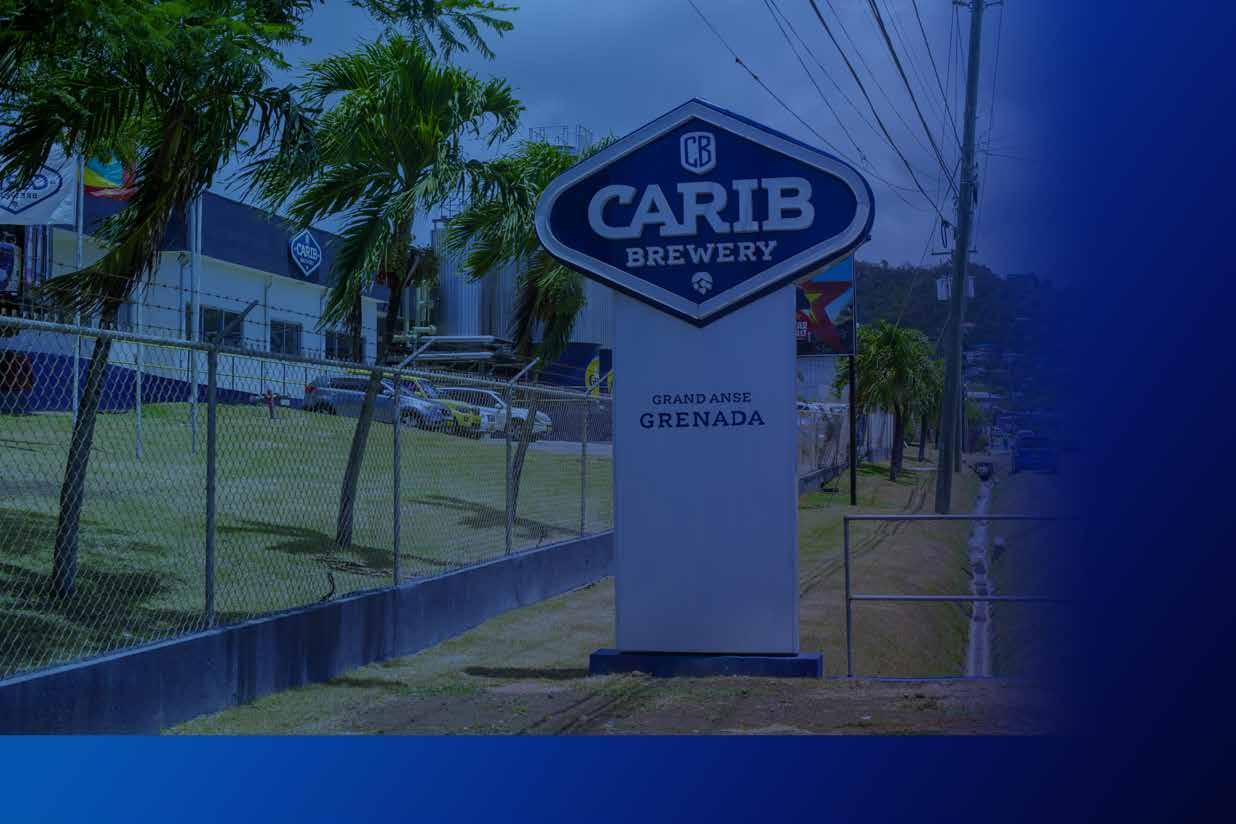






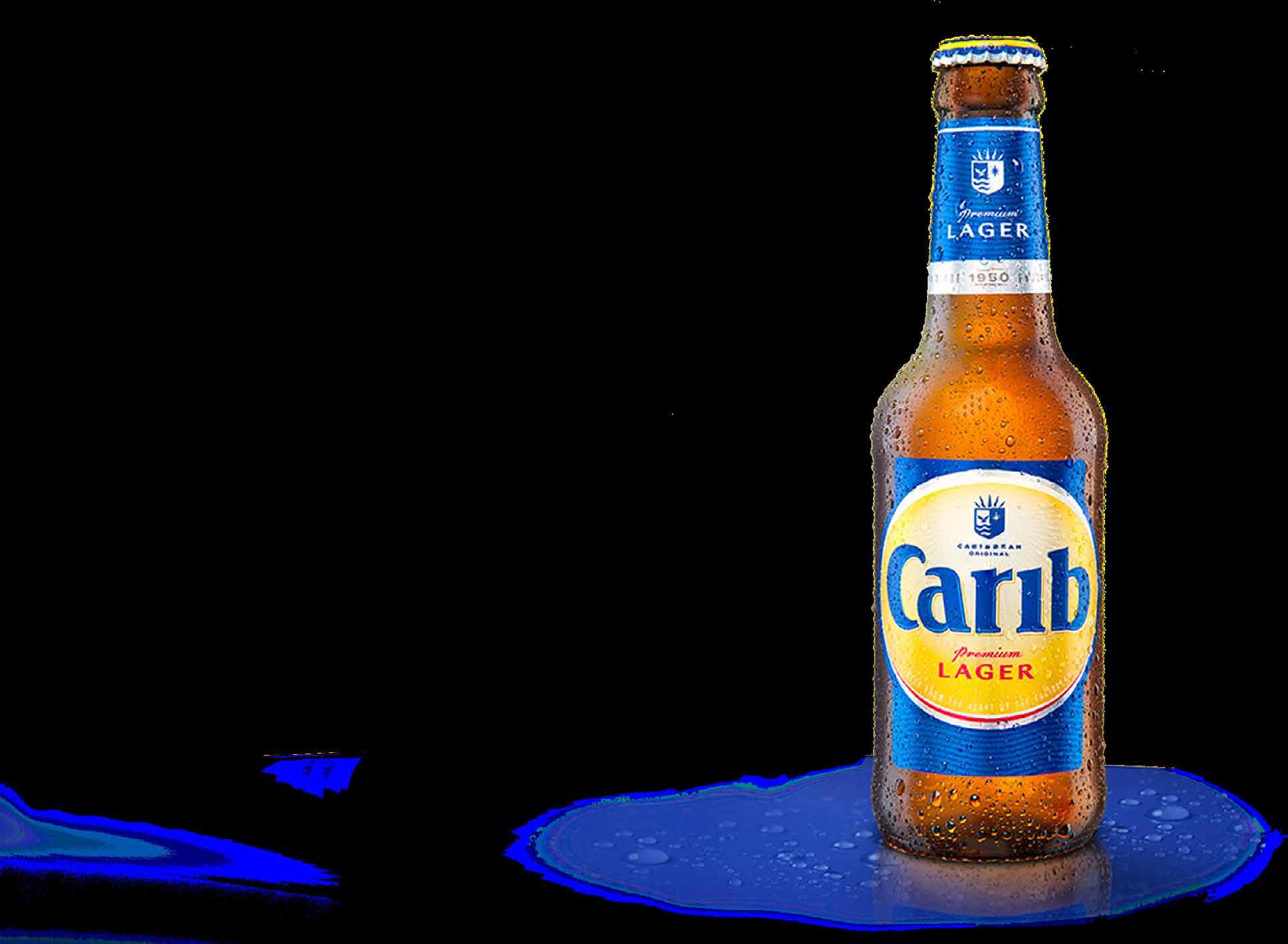
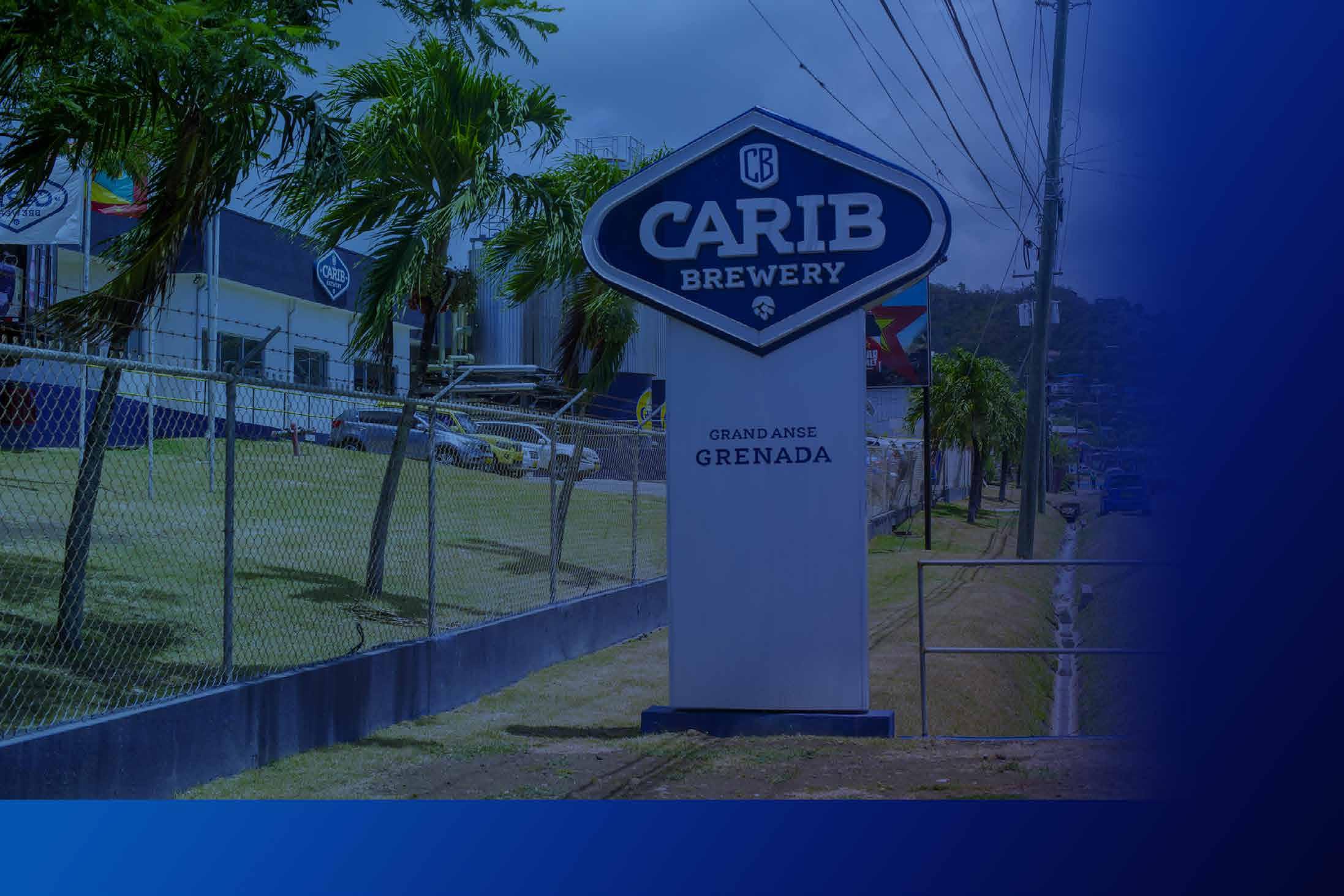






These guiding principles support and define the essence of Carib Brewery (Grenada) Limited which is key to creating a thriving business environment.


Highlighted are some of Carib Brewery (Grenada) Ltd.’s ESG commitments which are in support of the United Nations Sustainable Development Goals

CLEAN WATER AND SANITATION
AFFORDABLE AND CLEAN ENERGY
RESPONSIBLE CONSUMPTION AND PRODUCTION
Reduce usage of freshwater, a key ingredient, in the Brewery operations
Investment in renewable energy
Increase returns of primary packaging for reuse, and increase locally collected waste glass for recycling to reduce waste
GOOD HEALTH AND WELL-BEING
Promotion of safe alcoholic product consumption
DECENT WORK AND ECONOMIC GROWTH
INDUSTRY INNOVATION AND INFRASTRUCTURE
RESPONSIBLE CONSUMPTION AND PRODUCTION
Safety first culture with goal of zero accidents
Enhanced Cybersecurity management across the company
Top quality control for containers and packaging for consumer health and safety
RESPONSIBLE CONSUMPTION AND PRODUCTION
Integration of Sustainability into Corporate Strategy and internal processes
PEACE, JUSTICE AND STRONG INSTITUTIONS
Enterprise Risk Management implementation

Performance like the company delivered this year does not happen by chance. It arises from the talent, dedication and hard work of all employees, ably supported by the guidance of the Board. I extend thanks to my fellow directors, the executive team, customers and all employees for their continued commitment and efforts.

Carib Brewery Grenada has leveraged our team’s expertise and our deep understanding of customers into an increase in sales of our main brands by 15%, to $70.5 million. Profit before tax also grew, by 4% year-on-year, to $11.9M – despite ongoing pandemic impacts, supply chain disruptions and inflationary pressures.

The year also demonstrated the resilience of our supply chains and strong supply partnerships, which allowed us to satisfy demand as the economy opened after the Covid-19 restrictions. We have also made significant investments in operational expenses – including equipment, customer promotions and delivery. To improve the demand for our brands, we’ve continued to invest for the future with the addition of new products and packaging.
All this demonstrates consistent resilience in the face of global unpredictability, proving the strength of our brand and our team.
Dividends are important to all shareholders. In recognition of shareholders’ continuous support, the Board has approved a final dividend payment of $1.00 per share.
In 2022, we refreshed our purpose to reflect the dedication and passion that the company extends in serving customers. It is expressed through our support for local communities and the environment. We have reaffirmed our principle of growing our business based on sensitivity to the natural environment, societal well-being and good governance.
Economic conditions in most parts of the globe have become more challenging. Slowing growth, energy-driven inflation, and potential taxation increases may all impact the company, either directly or indirectly, through ebbing consumer demand. Challenging as the external environment is, our resilience, adaptability and agility remain cause for confidence. We have a solid base to realize our ambitions for future growth, based on our strengths in brand building, the capacity and elasticity of our supply chain, and the quality of our product and workforce.
Performance like the company delivered this year does not happen by chance. It arises from the talent, dedication and hard work of all employees, ably supported by the guidance of the Board. I extend thanks to my fellow directors, the executive team, customers and all employees for their continued commitment and efforts. We have conquered many obstacles together and I am certain that our purpose and strategies will enable us to move forward with confidence, continuing to deliver solid financial results year upon year.
2022 was another volatile year marked by supply chain disruptions and soaring material costs, that posed serious threats to growth. Nonetheless, Carib Brewery (Grenada) Limited (CBG) performed well and delivered year-on-year growth — a testament to the strength of our strategy, our company and our employees.


2022 was another volatile year marked by supply chain disruptions and soaring material costs, that posed serious threats to growth. Nonetheless, Carib Brewery (Grenada) Limited (CBG) performed well and delivered year-onyear growth — a testament to the strength of our strategy, our company and our employees.

Sales rose 15% as the local market stabilized as Covid-19 restrictions were further relaxed. In spite of significant cost increases, profit before tax improved by 4%. I am pleased CBG was able to deliver an improved financial outcome to our stakeholders.
CBG recorded a strong sales performance, with revenue growth of 15% from $61M to $70M. Operating profit before tax improved by 4% to $11.9M. Our dividend distribution more than doubled – from $3.5M in the prior period to over $8M, and cash balances remain strong at $20.5M. Payment of corporate income tax went up from $2M to $3.9M.
Retained earnings grew marginally from $44.3M to $44.4M as a result of higher dividends to shareholders. Overall, our financial position remains strong.
In 2022 our Company made significant investments in advertising and promotions, resulting in our products remaining “top of mind” as we dominated the Beer, Stout, and Malt categories. Our soft drink portfolio remains relevant; and we continue to review strategies to improve margins and strengthen this category.
In 2023, CBG is expanding our portfolio with the introduction of Eagle Ray Hard Seltzer, Mackeson Chocolate, Carib Blue, several Caribé Hard Cider flavours, and Carib Pilsner Light. These innovative products, along with other actions, will provide ongoing launch points for future strength and growth.
A decline in gross margins due to medium-term operational inefficiencies are being addressed in 2023 by further investments in plant and machinery. We are set to invest $9 million in capital projects, including the installation of a new state-of-the-art bottle washer, which will be commissioned during the first half of 2023. We have also placed significant emphasis on investments in our delivery fleet to improve our delivery capabilities.
In 2022, CBG installed a more sustainable beer filtration system. This membrane filtration system reduces the materials required for filtration by moving away from a Diatomaceous Earth (D.E.) coated stainless steel plate system.

We recognize that the actions of every participant in our society has an impact on the environment, and we are no exception: from the energy and resources we use, to the products we manufacture and the waste we generate. We advocate for everyone to find ways to reduce energy use, water consumption and waste.
We lead by example as we donate the nutrientrich by-product of brewing (spent grain) to our local farmers. All our products are packaged in returnable containers and crates, that can be crushed and returned to manufacturers for reuse. We diligently observe water efficiency practices and have replaced most of our lighting fixtures with LED lights. To reduce our energy consumption, we will be implementing an onsite solar energy project in 2023.
Based on our belief that education and training is necessary for development, we partnered with T. A. Marryshow Community College to provide on-the-job training to student mechanics and also provided full scholarship to four TAMCC students. As part of our mandate to support the communities where we operate, we helped numerous schools and social groups, remained a major sponsor of both primary and secondary schools’ athletic meets, sponsored numerous football and cricket competitions, and cultural festivals including our premier celebration –Spice Mas.
Upholding high standards of corporate ethics is key to long-term value creation and will contribute directly to improved business performance. Based on this belief each employee has a vital role in ensuring that the Company maintains the high standards of ethical conduct that our customers and stakeholders expect.
The Board Directors is responsible for determining the Company’s risk profile and policy, which are designed to achieve the Company’s objectives, to assess and manage
the Company’s risks and to ensure that sound internal risk management and control systems are in place. The Board is ably supported by the Audit Committee, which provides oversight of the financial reporting process, the audit process, the company’s system of internal controls and compliance with laws and regulations; the checks and balances ensuring that we account appropriately and manage prudently.
Various audits are performed to ensure that CBG’s procedures and processes are current and compliant. Furthermore, corrective actions are taken to close any gaps or bottlenecks with the assistance of ANSA McAL Group resources or other experts. One such gap, data privacy and data protection to mitigate against cyber attacks was progressed in 2022 with the support of ANSA McAL Information Technology expertise.

Our safety programmes underpin a safety-first culture. A critical part of this culture is ensuring that our employees can report both unsafe conditions and unsafe behaviours without fear of negative consequences. This has been embraced by our employees and contractors. During the year, we performed a detailed analysis of safety incidents to better understand the key factors that influence safety risks, the outcome of which led to increased safety communications, training and development. Road safety is of utmost importance to our business, thus we focused employee training on defensive driving techniques.
The health and well-being of our employees is of paramount importance. In 2022, CBG partnered with health professionals to hold a health fair where numerous health checks were performed. This was well supported by all employees and will become an annual activity.
There is little doubt that education and training is the first step toward improving
competitiveness and delivering value. In 2022, we upskilled our workforce with training in Information Technology, Food Safety, Health and Safety, Human Resources, and Finance/ Accounting.

Our people agenda this year has focused on improving employee engagement We have harnessed technology to increase the frequency of communications across the organization and increased the frequency of in-person meetings, including town-halls and toolbox meetings where employees were encouraged to share feedback and partake in company activities. Our employee rewards and recognition programs have been stepped up with awards for Employee and Supervisor of the Month and Quarter, Caught in the Act, and Trailblazer awards.
The extraordinary events of the last few years have presented enormous challenges in delivering growth. I am grateful to the management team for the very capable way in which they have led the business through this
turbulent period, and to our employees who delivered robust results. I also wish to thank the Board of Directors for their wise counsel and support during the year.

Our 2023 priorities will be to drive organic top-line growth, brand investment, and improved productivity and efficiencies through investments in people, plant and machinery. Based on economic reports, 2023 is going to be another challenging year; but with time, we are more prepared to face these challenges. I am confident that our strategic priorities, and our people, will position us well to deliver sustainable growth and value to all stakeholders.
Ron Antoine Managing DirectorIN WHAT WAS A VOLATILE YEAR, OUR COMPANY CONTINUED ITS GROWTH TRAJECTORY DELIVERING REVENUES OF $70.5 MILLION UP 15% FROM $61.3 MILLION (2021).

REVENUE UP 15% TO $70.5 MILLION FROM $61.3 (2021)
PROFIT BEFORE TAX (PBT) UP 4% TO $11.9 MILLION FROM $11.4 MILLION (2021)
EPS UP TO $2.02 VS $2.00 (2021)
TOTAL ASSETS UP TO $67.9 MILLION FROM $66.9 MILLION (2021)
$8.3 MILLION IN DIVIDENDS BACK TO SHAREHOLDERS
REVENUES FOR THE PERIOD ENDED 31ST DECEMBER 2022, GREW TO $70.5 MILLION ($61.3 MILLION — 2021) REPRESENTING A 15% INCREASE OVER THE PREVIOUS YEAR.

In some ways sustainability is an approach to the way the Company has done business; it makes good business sense. Similarly, Environmental, Social, Governance (ESG) is not new, but the Company recognizes the importance of these matters in the current environment where the impact of climate change, critical social issues and economic volatility around the world are prevalent as never before. As a result, we have decided to develop an ESG framework to be placed at the centre of operations and to grow our business in alignment with the United Nations Sustainable Development Goals and on the principles of sensitivity to the natural environment, societal well-being and good governance.
The ESG framework will be developed with the objective of achieving a comprehensive understanding of the impact of the Company's
revenue generation on people and the planet, disclosing it, and, in collaboration with key stakeholders, addressing it. To do this we will be dedicating significant resources to a data gathering exercise focused on understanding our baseline performance as benchmarked against international standards and best practice indicators and setting ambitious Key Performance Indicators (KPIs) year on year to ensure continuous and aggressive improvement.
We intend to be fully transparent with you our stakeholders as we progress, and we will begin taking steps to establish a robust system to allow us to measure, track and report on our ESG KPIs. As the journey continues, we have further developed and refined our Sustainability Business Priorities which we introduce later on when considering the future.

ENVIRONMENTAL PILLARS
• Water Preservation
• Waste Reduction
• Climate Impact
• Modern Energy
SOCIAL PILLARS
• Education
• Employee Well-Being
• Safe Work Place, Safe Future
• Consumer Health and Safety
• Responsible Marketing & Innovation

• Diversity, Equity/Inclusion
• Women's Empowerment
• Social Well-Being
GOVERNANCE PILLARS
• Enterprise Risk Management (ERM)
• Board Governance
• Responsible Advocacy
• Public Policies
• Stakeholder Engagement
• Business Ethics and Integrity
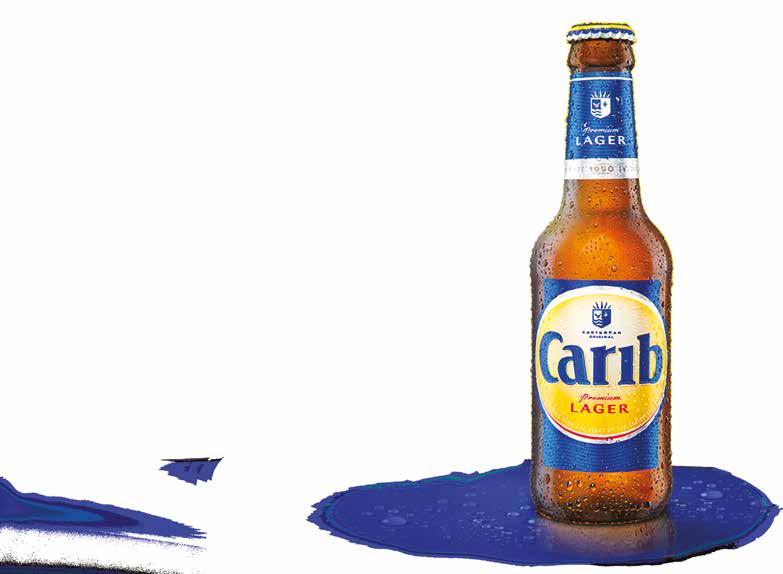



According to the United Nations, the “demand for water is rising owing to rapid population growth, urbanisation and increasing water needs from agriculture, industry, and energy sectors.” In support of the United Nations SDG 6: Clean water and sanitation, Carib Brewery (Grenada) Limited has committed to reducing the quantity of water utilised in its operations and to continue providing key products and services for the purification, conservation, and reuse of water.
Water is involved in almost every aspect of the beer manufacturing process; as an ingredient, for cooling and extensive cleaning required to maintain the high hygiene standards in the food and beverage industry.
Our water preservation strategy is focused on improving water efficiency, water conservation, and managing wastewater.

A Circular Economy is one that reduces material use, is designed to be less resource intensive, and utilises waste as a resource to manufacture new materials and products.
One of the primary platforms for sustainability is Carib Brewery (Grenada) Limited's returnable bottle and crate system. The model ensures that bottles are collected and returned for reuse or recycling. By reusing bottles and crates, the consumption of raw materials used, and the energy required to produce them are reduced. The result is a significantly reduced carbon footprint. Increase primary packaging returns for reuse/recycling
To achieve this, a robust education campaign will be rolled out, to sensitise consumers on the returnable bottle and crate system and promote the benefits of reuse and recycling. In addition to this, more accessible locations for consumers and customers to return and recycle our main packaging items are currently under review.

Brewing produces a lot of spent malt grain and at CBG, spent grain is distributed to farmers free of cost as an additive to supplement animal feed. This spent grain has a high protein content which can reduce feed purchases by more than 30 percent. This initiative reduces the waste output of the process.

The upgraded Group Human Resource Information System (HRIS) and Payroll System, will move many paper-based processes to an electronic system, saving paper used for HR approval processes. This transformational project will facilitate the automation of manual processes, leading to greater efficiencies and empowerment of employees and managers.
Carib Brewery (Grenada) Limited installed a more sustainable beer filtration system. This membrane filtration system reduces the materials required for filtration by moving away from a Diatomaceous Earth (D.E.) coated stainless steel plate system.


As much as 1,500 kg of filter aid were used on average per month. The new filtration system eliminates the need for D.E., hence less materials required for the process and less solid waste output. An added benefit of this system is the enhanced beer quality for consumers.
Increase the volume of CO2 recovered annually
At CBG, the CO2 generated during fermentation is a valuable resource that can be recovered, purified, and reused within the brewery operations. As well as helping to reduce production costs, CO2 recovery from fermentation means a greener process overall, with lower emissions and a reduced carbon footprint. Carib Brewery (Grenada) Limited will be installing a recovery system in 2023.




HAVING THE BASICS RIGHT ISN’T GOOD ENOUGH. AT CBG, WE ARE CREATING A GREAT PLACE TO WORK.
culture are the central focus of our agenda. Our new Human Resources Information System (Employee Central), which was launched in 2022 allows employees and managers to have data at their fingertips to enable the progressive management of their teams, their learning and their careers.
TO BUILD THIS GREAT PLACE TO WORK, WE ARE ENSURING THAT WE
Are always equitable across markets, companies and positions

Enable
Build teams of young empowered dynamic powerhouses to fuel the future


EMPLOYEES ARE OUR MOST VALUABLE STAKEHOLDERS.
They are the engines that keep the businesses going, the collective spirit of the company, and our brand ambassadors. Our mantra ‘Together We Are Family’ guides our practices on how we invest and look after people. It is therefore only
natural that we focus on the health and wellbeing of these essential family members.
CBG held a Health and wellness week was hosted in October and included several activities: a session on learning to breathe and its impact on your body, a health and diet lecture, an Employee Health Fair including health screening and consultation. First aid and CPR demonstrations and training, were also held during the year
MENTAL HEALTH IS A KEY COMPONENT IN THE HEALTH AND WELL-BEING OF EVERY, EMPLOYEE’S LIFE.
Our Employee Assistance Programme (EAP) Provider Families in Action, is confidential and available free of charge to all employees and their families, and has received tremendously positive feedback.
Available and encouraged topics are: Achieving a Healthy Work-Life Balance, Mental Health, Positively Managing Stressors. In addition, crisis management interventions, grief counselling, emotional and financial counselling and Managerial coaching are all offered and utilised by a myriad of our staff.




Responsible alcohol consumption:

As a socially responsible entity, we have committed to campaigns that promote the safe consumption of its products. One such campaign is the @EASE (AT EASE) campaign, which embodies the idea that as the Carib brand expresses the fun, energy and happiness that flows naturally through all Caribbean people in ‘the way we play’, there is also the sense of cool ease with which we enjoy life that also defines us and gives us balance. Therefore, by practising this balance, with each person consuming our products responsibly, we all put each other’s minds ‘at ease’, to enjoy the best of good times together.
With this thinking behind the responsibility campaign, communication on all media, merchandising and social platforms, will carry an @EASE symbol in 2023, as the signature of commitment to inspiring everyone to responsibly enjoy our products anytime, anywhere.





CBG AS PART OF THE ANSA McAL GROUP HAS A CLEARLY DEFINED CORPORATE GOVERNANCE STRUCTURE HINGED ON SUCH THINGS AS ETHICAL PRACTICE, TRANSPARENCY, DIVERSITY, AND INCLUSION. GOOD CORPORATE GOVERNANCE CAN BE DESCRIBED AS THE ROOT OF THE ESG TREE, A SOLID FOUNDATION FROM WHICH A MEANINGFUL SUSTAINABILITY STRATEGY CAN BE BUILT.

The Board’s role is to oversee the Company’s Management and to ensure the long-term value of the Company for its shareholders. The Board recognizes that the long-term interests of shareholders is served by taking into account
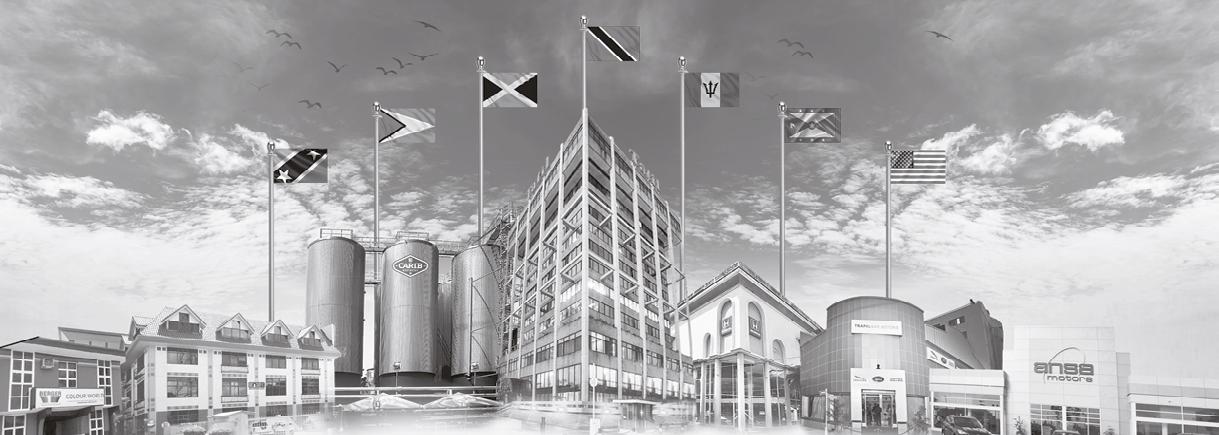
the interests of all stakeholders starting with our employees, customers, suppliers and the communities in which the Company’s businesses operate.

The Audit Committee is responsible for assisting the Board in fulfilling its oversight responsibilities for the Financial Reporting process, the System of Internal Control over Financial Reporting, the Audit process, and the Company’s process for monitoring compliance with Laws and Regulations.
This committee is charged with overseeing Managements enterprise risk policies and procedures and discussing the Company’s key risk exposures.
Impact Stewardship
Knowing our impact
Reducing adv
Enhancing positive outcomes
Equality
Promoting fairness
Fostering inclusion
Embracing diversity
Environmental
Accountability
Taking ownership
Disclosing transparently
Acting responsibly
– Climate change mitigation & adaptation
– Water and marine resources
– Resource use and circular economy
– Pollution reduction
– Biodiversity and ecosystems
People and Communities
Boosting employee, customer and consumer well-being
Creating access and opportunity
Driving social advancement
Purposeful Investing Responsible Governance
Engaging stakeholders
Optimising risk
Operating with ethics and integrity
Prioritising resource
Intentional deployment of capital
Accelerating Sustainable Development
Governance
– Stakeholder Engagement & Advocacy
– Enterprise Risk Management
– Board Governance
– Public Policies
– Business Ethics and Integrity
Social
– Safe working
– Equal Opportunity
– Employee, customer and consumer well-being

– Responsible Marketing & Innovation
– Education







CBG invests in education and sports at all levels. In 2022 we provided support to facilitate fundraising events, cultural events and competitions and sporting events.
In 2022 CBG continued to support the Queen Elizabeth Home for Children which was founded in 1964 to provide a safe environment for children who were abandoned and abused. The hope is to provide a safe environment for them, helping to create a better tomorrow with the hope of breaking the cycle of abuse.
For many consecutive years, we have provided products and school supplies to this Home and we are humbled to be aligned with such a facility which serve those who are at the most vulnerable stages of their lives.
Malcom X once said, “Education is the passport to the future, for tomorrow belongs to those who prepare for it today.” Carib Brewery presented the Vita Malt TAMCC Scholarship 2022 to four recipients. This award allowed students who are financially challenged to have an opportunity to continue their education on a tertiary level. Two full and two partial scholarships were presented to four students. The two full awardees received a laptop, their tuition fully paid and one case of Vita Malt each month, transportation, meal allowance and mentorship from the management team. Despite the challenging backgrounds the students have shown a willingness to not let those challenges deter them from furthering their education and pursuing their dreams.




CARIB BREWERY (GRENADA) LIMITED HAS A NOTABLE HISTORY OF SUPPORTING CULTURAL, SPORTING, CHARITABLE AND SOCIAL ACTIVITIES.





The Brewery, through numerous contributions, strives to make a unique and positive impact in the communities in which it operate. We also focus on activities that aim to enrich public and community life, including supporting the arts and institutions specifically focused on protecting and safeguarding our local cultural and natural heritage.
Carib Brewery (Grenada) Limited has been sponsoring Carnival events, fêtes, soca artistes, promoters and mas bands. Our brands are synonymous with Carnival, culture and the vibrant energy of Grenadian people.
The Brewery focuses on activities that aim to enrich public and community life, including supporting the arts and institutions specifically focused on protecting and safeguarding the nation’s cultural and natural heritage.








MR. ANTHONY N. SABGA Ill holds the position of Group Chief Executive Officer (CEO) of ANSA McAL Limited and Chairman of the Board of Carib Brewery(Grenada) Limited.


Mr. Sabga holds a Bachelor of Science Degree in Economics from City University and a Masters in International Business Administration from Regents Business School, United Kingdom.
In 2001, Mr. Sabga started his early career at Trinidad Publishing Company (now known as Guardian Media Limited) as Promotions and Circulations Manager.
In 2003, he was appointed as the Executive at ANSA McAL’s Head Office with the focus on Strategic Development of the Group’s IT Infrastructure and the development and implementation of the Group’s Balanced Score Card and Strategic Management Frameworks. Mr. Sabga’s career included diverse portfolios as General Manager at Classic Motors and President of Carib Beer USA.
As Group CEO, Mr. Sabga is accountable for the leadership of the Group’s Executive Team in providing long-term strategic vision to maintain the Group’s competitiveness and sustainability, while expanding and diversifying the business portfolio and geographic reach to ensure the agility necessary to embrace and respond to the business opportunities in the region and globally.
MR. PETER J. HALL is the Sector Head – Beverage within the ANSA McAL Group of Companies. The Beverage Sector consists of four (4) owned and operated Breweries and an International (Export) business that develops the Carib® Brand in over 30 countries.
Prior to his current role, Peter was the President of Dean & DeLuca Consumer Brands, SVP Sales and Marketing for Heineken Americas, having joined Heineken in 2007. He has also worked with Treasury Wine Estates (Beringer), Diageo and Marakon Associates. Peter holds a Bachelor’s Degree from the University of Melbourne, Australia and Master’s from Cambridge University, England.

MR. RON ANTOINE is currently the Managing Director of Carib Brewery (Grenada) Limited and has been for the past fourteen (14) years. Currently, he is also the Chairman of the Grenada Ports Authority.
Prior to Ron’s current role, he served as Chairman of both the National Insurance Board and Caribbean Brewers’ Association.
Ron is a member of both the CBA & MBAA, having joined in 2007 and also previously served as Chairman of the CBA.


Ron holds a Bachelor’sDegree in Mechanical Engineering from the University of the West Indies and a MBA in Accounting from Cornell University, USA.
ANDREW J. BIERZYNSKI. CHAIRMAN OF AUDIT COMMITTEE/INDEPENDENT DIRECTORMR. ANDREW J. BIERZYNSKI's business career began in Insurance, with now defunct Carib Insurance Co. Ltd. At age 21 he was appointed to the Board of Directors. As a result of the political environment in the 1970s he emigrated to pursue other opportunities and worked in the Health Food Industry.

Returning to Grenada in 1979 he worked in the Automotive Industry with J. B. Hubbards, and then with G. F. Huggins in Marketing. In 1985 joined Renwick Thompson & Co. Ltd and established Best of Grenada Ltd. his main occupations to today, where he is Director and Managing Director respectively.
He has served in many capacities viz. formally a Director of the National Commercial Bank, several of his own Companies covering a range of diverse interests in LPG Distribution, Agricultural Goods, Chemicals, Household Cleaners, Financial Services, Liquor/Wine Distribution, Real Estate Development, Hospitality Services. Currently serving as a Director of the Grenada Building & Loan Association. He holds interests in several other Public/Private Companies.
He was educated at the GBSS and Mapps College Barbados.
ADRIAN SABGA MANAGING DIRECTOR OF INTERNATIONAL AND BUSINESS DEVELOPMENT/ DIRECTOR
MR. ADRIAN SABGA currently holds the position of Managing Director of International and Business Development at Carib Brewery (Grenada) Limited. He is charged with managing all export markets (currently 33 and growing) as well as managing all business development prospects which encompasses both organic and inorganic growth opportunities. Before this, he also led the innovation team and had the pleasure of launching some of Carib Breweries most exciting innovations like Carib Blue, Caribé, Hurricane Reef, and Rockstone to name a few.
Mr. Sabga holds a Master of Science, MSc–Management, Information System & Innovation from the London School of Economics and Political Science, and a BSc in Management and Economics from the University of West of England.
MR. MARK A. WILKIN is the Managing Director of Carib Brewery (St. Kitts and Nevis) Ltd. for the past 20 years. He also sits as a Non-Executive Director of S. L. Horsford and Co. Limited (A diversified trading Co) and a Director of St. Kitts Developments Limited (Land development Co). Prior to his current role, Mark was an Executive Director S. L. Horsford & Co Ltd, Basseterre, St Kitts.

Mark is currently Chairman of the Manufacturing Division of the St Kitts – Nevis Chamber of Industry and Commerce (SKNCIC). He was President of the SKNCIC from 2008 to 2010 and has served as a Chamber Director and Allied Director of St Kitts – Nevis Hotel and Tourism Association for many years.
Mark is a member of both the CBA and MBAA, having joined both in 2003. He also served as Chairman of the CBA in 2007/2008 and President of the MBAA in 2007 and 2017.
He holds a Bachelor’s Degree (BA) from the University of Western Ontario, Canada and a Master’s (MBA) from University of Keele, England.

MRS. ALDYN HENRY–BISHOP holds the position of Chief Financial Officer at Carib Brewery (Grenada) Limited with over 20 years experience in Finance and Accounting.
She holds a Bachelors of Science Degree (Hons) in Management from the University of the West Indies, Cave Hill Campus, a Fellow Member of Association of Chartered Certified Accountants and possess a Masters of Business Administration with specialization in Strategic Planning from Edinburgh Business School, Heriot-Watt University. She also served for over 5 years as a Director of Sissons Paints Grenada Limited and Chairperson of their Audit Committee and is currently a Director of the Grenada Investment Development Corporation.

DR. AVERNE PANTIN has a proven executive management track record with over 30 years of experience driving growth and development in areas of strategic manufacturing, engineering and port management.

As a senior executive in the area of Logistics and Supply Chain Industry, he is responsible for the strategic trust for PLIPDECO.

Before the world of logistics, Dr. Pantin once headed all green, brown field and turnaround operational type projects for Brauhaase International Management GmbH, Germany. Such projects were undertaken regionally, in Africa, Asia and South Pacific. Dr. Pantin presently serves as Director and Council Advisor for the Beverage and Real Estate Development Sectors of the ANSA McAL Group of Companies. He is also a part-time Lecturer at the University of the West Indies for Graduate Studies in the field of Supply Chain Management. He is a senior member of the Association of Professional Engineers of Trinidad and Tobago, a member of the Project Management Institute, Trinidad Charter, and a Global Partner for Balance Score Card Institute, USA.
MR. AKASH RAGBIR has been working in the Brewing Industry for the past 29 years.

He started his career at Carib Brewery Trinidad in 1992 and has worked in a number of management positions across all areas of a Brewery. He holds a B.Sc. in Biochemistry and an M.Sc. in Production and Operations Management from the University of the West Indies and is a qualified Brewmaster having pursed Brewing Studies in USA, UK and Germany.
He has previously held senior management positions in the brewing industry in Jamaica and Barbados and in 2017 re-joined the ANSA McAL family as the Sector Supply Chain Director for the Beverage Sector of the ANSA McAL Group.
















Mr. Anthony N. Sabga III – Chairman
Mr. Peter Hall – Beverage Sector Head
Mr. Ron Antoine – Managing Director
Mrs. Aldyn Henry-Bishop – Financial Comptroller/Company Secretary
Mr. Andrew Bierzynski – Chairman of Audit Committee/Independent Director
Mr. Mark Wilkin
Dr. Averne Pantin – Independent Director
Mr. Adrian Sabga
Mr. Akash Ragbir
Mr. Andrew Bierzynski – Chairman
Mr. Ron Antoine
Dr. Averne Pantin
Mrs. Aldyn Henry-Bishop – Bsc. (Hons), FCCA, MBA
Grand Anse, St. George’s, Grenada, West Indies.
PKF
Accountants and Business Advisers

Grand Anse, St. George’s, Grenada.
CIBC FirstCaribbean International Bank (Barbados) Limited
Church Street, St. George’s, Grenada.
ACB Grenada Bank Ltd
Grand Anse, St. George’s, Grenada.
Mitchell & Co.
Units 14–16 Excel Plaza
Grand Anse, St. George’s, Grenada.
Aldyn Henry-Bishop, Company Secretary
Carib Brewery (Grenada) Limited
Grand Anse, St. George’s, Grenada.
The Directors have pleasure in presenting their Report to the Members together with the Financial Statements for the year ended December 31, 2022
Subsequent to year end, a dividend of $1.00 per share in respect of 2022 was declared by the Directors. These would be paid on 30th May, 2023, to Shareholders on the Register of Ordinary Members on 9th May, 2023
The Directors listed on page 3 served during the year. In accordance with By-Law No 1Section 4.5, Mr. Mark Wilkin and Mr. Peter Hall are the Directors retiring by rotation and being eligible, offer themselves for re-election.
The Auditors Messrs. PKF Accountants and Business Advisers have expressed their willingness to continue in office.

April, 2023

According to the Company’s Register, the interests of the Directors on the dates indicated are as follows:
The following companies held more than 5% of the stated capital of the Company:
Carib Brewery (Grenada) Limited (“the Company”) wishes to advise its shareholders that the Sixty-Third Annual Meeting of the Company will be held at the Grenada Room, Radisson Grenada Beach Resort, Grand Anse, St. George’s on Tuesday, 30th May, 2023 from 4:30 pm. for the following purposes:

1. To receive and consider the Audited Financial Statements for the year ended December 31st, 2022 and the Reports of the Directors and Auditors thereon.
2. To re-elect Directors.
3. To re-appoint Auditors and authorize the Directors to fix their remuneration.
ALL shareholders are required to follow Radisson Grenada’s established protocols and any other protocols that may be in effect at the time of the meeting. The 2022 Annual Report can be viewed electronically at www.ansamcal.com.
Dated this 4th day of April, 2023
Aldyn Henry-Bishop Company Secretary1. In accordance with Section 108 (1) and (2) of the Company Act #35 of 1994, the Directors have fixed 9th May, 2023 as the record date for determining the Shareholders who are entitled to receive dividend payments for the period ending December 31st 2022 and notice of the Annual Meeting for the period ended December 31st 2022. Only Shareholders on record at the close of business on 9th May, 2023 are therefore entitled to receive such. A list of such Shareholders will be available for examination by the Shareholders at the Company’s Registered Office during usual business hours and at the Annual Meeting.
2. A Shareholder entitled to attend the Annual Meeting and vote is entitled to appoint one or more proxies to attend and vote instead of him/her; a proxy need not be a Shareholder. Attached is a Proxy Form for your convenience which must be completed and signed in accordance with the Notes on the Proxy Form and then deposited with the Company Secretary at the Registered Office of the Company no later than 48 hours before the time appointed for holding the meeting.
3. The Transfer Books and Register of members will be closed from 8th – 30th May 2023, inclusive.
The Company Secretary
Carib Brewery (Grenada) Limited
P. O. Box 202
Grand Anse, St. George’s Grenada
Sixty-Third Annual Meeting of Carib Brewery (Grenada) Limited to be held on Tuesday 30th May 2023 at 4.30pm at the Grenada Room, Radisson Grenada Beach Resort, Grand Anse, St. George’s, Grenada.

I/We
(Name of Shareholder/s) (Block Letters) of (Address) (Block Letters)
Shareholder (s) of the above Company, hereby appoint Mr. Anthony N. Sabga III Chairman or failing him,
(Name of Proxy) of (Address of Proxy)
as my/our proxy to vote for me/us on my/our behalf at the above meeting and any adjournment thereof as indicated below on the resolutions to be proposed in the same manner, to the same extent and with the same powers as if I/we were present at the said meeting or such adjournment or adjournments thereof.
Please indicate with an “X” in the spaces below how you wish your Proxy to vote in the Resolutions referred to. If no such indication is given the proxy will exercise his discretion as to how he votes or whether he abstains from voting.
1. The Audited Financial Statements of the Company for the year ended December 31, 2022 and the Reports of the Directors and Auditors thereon be adopted.
2. In accordance with By-Law No. 1 Section 4.5, each of the following persons who retire and being eligible be and each of them hereby is re-elected as a Director of the Company:
i. Mr. Mark Wilkin
ii. Mr. Peter Hall
3. PKF Accountants and Business Advisers be re-appointed Auditors of the Company and the Directors be authorised to fix their remuneration for the ensuing year.
Dated this day of 2023
Signature of Shareholder Name in Block letters
4. If it is desired to appoint as a proxy a person other than those named on the form, delete as necessary and insert the name and address of the person appointed.
5. If the shareholder is a corporation, this Proxy Form must be under its common seal or under the hand of some officer or attorney duly authorised in writing.
6. A shareholder that is a corporate body may, in lieu of appointing a proxy, authorise an individual by resolution of its directors or governing body to represent it at this Annual Meeting.
7. In the case of a joint shareholder, the signature of one joint shareholder is sufficient, but the names of all joint shareholders should be stated.
8. If the Proxy Form is returned without any indication as to how the person appointed shall vote, the proxy will exercise his/her discretion as to how he/she votes or whether he/she abstains from voting.
9. Any alteration made to this form of proxy must be initialled
10. To be valid, this Proxy Form must be completed and deposited at the Registered office of the Company, at the address below not less than 48 hours before the time for holding the Annual Meeting or adjournment meeting.

The Company Secretary
Carib Brewery (Grenada) Limited
P. O. Box 202
Grand Anse, St. George’s Grenada
Tel: (473)–440–2562 | 3014 | 2127 | 0414
Fax: (473)–440–6750 | Email: pkf@pkfgrenada.com

Opinion
We have audited the financial statements of Carib Brewery (Grenada) Limited (‘the Company’) which comprise the statement of financial position as at 31st December, 2022, and the statement of comprehensive income, statement of changes in equity and the statement of cash flows for the year then ended and notes to the financial statements, including a summary of significant accounting policies.
In our opinion, the accompanying financial statements present fairly, in all material respects, the financial position of the Company as at 31st December, 2022 and its financial performance and its cash flows for the year then ended in accordance with International Financial Reporting Standards (“IFRSs”).
We conducted our audit in accordance with International Standards on Auditing (“ISAs”). Our responsibilities under those standards are further described in the Auditors’ Responsibilities for the Audit of the Financial Statements section of our report. We are independent of the Company in accordance with the ethical requirements that are relevant to our audit of the financial statements in Grenada, and we have fulfilled our other ethical responsibilities in accordance with these requirements. We believe that the audit evidence we have obtained is sufficient and appropriate to provide a basis for our opinion.
Other information consists of the information included in the Company’s 2022 Annual Report, other than the financial statements and our auditor’s report thereon. Management is responsible for the other information.
Our opinion on the financial statements does not cover the other information and we will not express any form of assurance conclusion thereon.
In connection with our audit of the financial statements, our responsibility is to read the other information identified above when it becomes available and, in doing so, consider whether the other information is materially inconsistent with the financial statements or our knowledge obtained in the audit or otherwise appears to be materially misstated.
Management is responsible for the preparation and fair presentation of the financial statements in accordance with IFRSs, and for such internal control as management determines is necessary to enable the preparation of financial statements that are free from material misstatement, whether due to fraud or error.
In preparing the financial statements, management is responsible for assessing the Company’s ability to continue as a going concern, disclosing, as applicable, matters related to going concern and using the going concern basis of accounting unless management either intends to liquidate the Company or to cease operations, or has no realistic alternative but to do so.
The Audit Committee is responsible for overseeing the Company’s financial reporting process. Our objectives are to obtain reasonable assurance about whether the financial statements as a whole are free from material misstatement, whether due to fraud or error, and to issue an auditor’s report that includes our opinion.
Reasonable assurance is a high level of assurance but is not a guarantee that an audit conducted in accordance with ISAs will always detect a material misstatement when it exists. Misstatements can arise from fraud or error and are considered material if, individually or in the aggregate, they could reasonably be expected to influence the economic decisions of users taken on the basis of these financial statements.
As part of an audit in accordance with ISAs, we exercise professional judgment and maintain professional scepticism throughout the audit. We also:
• Identify and assess the risks of material misstatement of the financial statements, whether due to fraud or error, design and perform audit procedures responsive to those risks, and obtain audit evidence that is sufficient and appropriate to provide a basis for our opinion. The risk of not detecting a material misstatement resulting from fraud is higher than for one resulting from error, as fraud may involve collusion, forgery, intentional omissions, misrepresentations, or the override of internal control.
• Obtain an understanding of internal control relevant to the audit in order to design audit procedures that are appropriate in the circumstances, but not for the purpose of expressing an opinion on the effectiveness of the Company’s internal control.
• Evaluate the appropriateness of accounting policies used and the reasonableness of accounting estimates and related disclosures made by management.

• Conclude on the appropriateness of management’s use of the going concern basis of accounting and, based on the audit evidence obtained, whether a material uncertainty exists related to events or conditions that may cast significant doubt on the Company’s ability to continue as a going concern. If we conclude that a material uncertainty exists; we are required to draw attention in our auditor’s report to the related disclosures in the financial statements or, if such disclosures are inadequate, to modify our opinion. Our conclusions are based on the audit evidence obtained up to the date of our auditor’s report. However, future events or conditions may cause the Company to cease to continue as a going concern.
• Evaluate the overall presentation, structure and content of the financial statements, including the disclosures, and whether the financial statements represent the underlying transactions and events in a manner that achieves fair presentation.
We communicate with the Audit Committee regarding, among other matters, the planned scope and timing of the audit and significant audit findings, including any significant deficiencies in internal control that we identify during our audit.
(Expressed in thousands of Eastern Caribbean Dollars)
The accompanying notes form an integral part of these financial statements
Approved by the Board of Directors on 27th February, 2023 and signed on its behalf by:


DECEMBER, 2022 (Expressed in thousands of Eastern Caribbean Dollars)
The accompanying notes form an integral part of these financial statements

(Expressed in thousands of Eastern Caribbean Dollars)
The accompanying notes form an integral part of these financial statements
(Expressed in thousands of Eastern Caribbean Dollars)
Net profit for the year before taxation

Operating profit before working capital changes
Increase in inventories
(Increase)/decrease in trade and other receivables
Increase in investment securities
Increase in past service benefits liability
Decrease in trade and other payables
Increase/(decrease) in provision for repayment of deposits on cases
Increase` in amounts due to ANSA McAL Group of Companies
Increase in due from related party
The accompanying notes form an integral part of these financial statements
CARIB BREWERY (GRENADA) LIMITED31ST DECEMBER, 2022 (Expressed in thousands of Eastern Caribbean Dollars)
Carib Brewery (Grenada) Limited (formerly Grenada Breweries Limited) was incorporated in Grenada on 27th July, 1960. The Company was issued a certificate of continuance under Section 365 of the Company’s Act. The Company’s registered office and principal place of business is Maurice Bishop Highway, St. George’s, Grenada.
The Company’s principal activities are the brewing, bottling and distribution of Beers, Stout, Maltas and Soft Drinks.
Carib Brewery (Grenada) Limited (formerly Grenada Breweries Limited) is a subsidiary of the ANSA McAL Group of Companies, which owns 55.54% of the ordinary share capital of the Company.
ANSA McAL Limited is incorporated in the Republic of Trinidad and Tobago and is a diversified public conglomerate which is listed on the Trinidad and Tobago Stock Exchange. The Company’s registered office is 11 Maraval Road, Port of Spain, Trinidad.
During the year the Company employed on average two hundred and thirty-four (234) persons (2021–206).
The principal accounting policies adopted in the preparation of these financial statements are set out below. These policies have been consistently applied to the years presented, unless otherwise stated.
These financial statements have been prepared in accordance with International Financial Reporting Standards (IFRS). The financial statements have been prepared under the historical cost convention modified by the revaluation of land and buildings.
The preparation of financial statements in conformity with IFRS requires the use of certain critical accounting estimates. It also requires management to exercise its judgment in the process of applying the Company’s accounting policies. The areas involving a higher degree of judgment or complexity, or areas where assumptions and estimates are significant to the financial statements are disclosed in Note 3.

The accounting policies adopted in the preparation of the financial statements are consistent with those followed in the preparation of the Company’s annual financial statements for the year ended 31st December, 2021 except for the adoption of new standards and interpretations below.
Amendments to IAS 16 – Property, Plant and Equipment: Proceeds before Intended Use (Effective 1st January, 2022)
The amendment prohibits entities from deducting from the cost of an item of property, plant and equipment (PP&E), any proceeds of the sale of items produced while bringing that asset to the location and condition necessary for it to be capable of operating in
the manner intended by management. Instead, an entity recognizes the proceeds from selling such items, and the costs of producing those items, in profit or loss.
Amendments to IFRS 3 – Reference to the Conceptual Framework (Effective 1 January, 2022)
In May 2020, the IASB issued Amendments to IFRS 3 Business Combinations –Reference to the Conceptual Framework. The amendments are intended to replace a reference to a previous version of the IASB’s Conceptual Framework (the 1989 Framework) with a reference to the current version issued in March 2018 (the Conceptual Framework) without significantly changing its requirements.
The amendments add an exception to the recognition principle of IFRS 3 to avoid the issue of potential ‘day 2’ gains or losses arising for liabilities and contingent liabilities that would be within the scope of IAS 37 Provisions, Contingent Liabilities and Contingent Assets or IFRIC 21 Levies, if incurred separately. The exception requires entities to apply the criteria in IAS 37 or IFRIC 21, respectively, instead of the Conceptual Framework, to determine whether a present obligation exists at the acquisition date. At the same time, the amendments add a new paragraph to IFRS 3 to clarify that contingent assets do not qualify for recognition at the acquisition date.
Amendments to IAS 37 – Onerous Contracts, Costs of Fulfilling a Contract (Effective 1st January, 2022)
In May 2020, the IASB issued amendments to IAS 37 Provisions, Contingent Liabilities and Contingent Assets to specify which costs an entity needs to include when assessing whether a contract is onerous or loss-making. The amendments apply a ‘directly related cost approach’. The costs that relate directly to a contract to provide goods or services include both incremental costs (e.g., the costs of direct labour and materials) and an allocation of costs directly related to contract activities (e.g., depreciation of equipment used to fulfil the contract as well as costs of contract management and supervision). General and administrative costs do not relate directly to a contract and are excluded unless they are explicitly chargeable to the counterparty under the contract. These amendments had no impact on the Company.

Amendments to IAS 1 – Classification of Liabilities as Current and Non-Current (Effective 1st January, 2023)
In January 2020, the Board issued amendments to paragraphs 69 to 76 of IAS 1 Presentation of Financial Statements to specify the requirements for classifying liabilities as current or non-current. The amendments clarify:
– What is meant by a right to defer settlement
– That a right to defer must exist at the end of the reporting period
– That classification is unaffected by the likelihood that an entity will exercise its deferral right
– That only if an embedded derivative in a convertible liability is itself an equity instrument, would the terms of a liability not impact its classification
Amendments to IAS 1 and IFRS Practice Statement 2 – Disclosure of Accounting Policies (Effective 1st January, 2023)
The amendments change the requirements in IAS 1 with regard to disclosure of accounting policies. The amendments replace all instances of the term ‘significant accounting policies’ with ‘material accounting policy information’. Accounting policy information is material if, when considered together with other information included in
an entity’s financial statements, it can reasonably be expected to influence decisions that the primary users of general purpose financial statements make on the basis of those financial statements.
The supporting paragraphs in IAS 1 are also amended to clarify that accounting policy information that relates to immaterial transactions, other events or conditions is immaterial and need not be disclosed. Accounting policy information may be material because of the nature of the related transactions, other events or conditions, even if the amounts are immaterial. However, not all accounting policy information relating to material transactions, other events or conditions is itself material.
The Board has also developed guidance and examples to explain and demonstrate the application of the ‘four-step materiality process’ described in IFRS Practice Statement 2.
(Effective 1st January, 2023)
The amendments replace the definition of a change in accounting estimates with a definition of accounting estimates. Under the new definition, accounting estimates are “monetary amounts in financial statements that are subject to measurement uncertainty”.
The definition of a change in accounting estimates was deleted. However, the Board retained the concept of changes in accounting estimates in the Standard with the following clarifications:
• A change in accounting estimate that results from new information or new developments is not the correction of an error.
• The effects of a change in an input or a measurement technique used to develop an accounting estimate are changes in accounting estimates if they do not result from the correction of prior period errors.

(Effective 1st January, 2023)
The amendments introduce a further exception from the initial recognition exemption. Under the amendments, an entity does not apply the initial recognition exemption for transactions that give rise to equal taxable and deductible temporary differences.
Depending on the applicable tax law, equal taxable and deductible temporary differences may arise on initial recognition of an asset and liability in a transaction that is not a business combination and affects neither accounting nor taxable profit.
Following the amendments to IAS 12, an entity is required to recognize the related deferred tax asset and liability, with the recognition of any deferred tax asset being subject to the recoverability criteria in IAS 12.
The amendments apply to transactions that occur on or after the beginning of the earliest comparative period presented. In addition, at the beginning of the earliest comparative period an entity recognises:
• A deferred tax asset (to the extent that it is probable that taxable profit will be available against which the deductible temporary difference can be utilised) and a deferred tax liability for all deductible and taxable temporary differences associated with:
– Right-of-use assets and lease liabilities.
– Decommissioning, restoration and similar liabilities and the corresponding amounts recognised as part of the cost of the related asset.
• The cumulative effect of initially applying the amendments as an adjustment to the
opening balance of retained earnings (or other component of equity, as appropriate) at that date.
In May 2017, the International Accounting Standards Board (IASB) issued IFRS 17 Insurance Contracts (IFRS 17), a comprehensive new accounting standard for insurance contracts covering recognition and measurement, presentation and disclosure. Once effective, IFRS 17 will replace IFRS 4 Insurance Contracts (IFRS 4) that was issued in 2005. IFRS 17 applies to all types of insurance contracts (i.e., life, non-life, direct insurance and re-insurance), regardless of the type of entities that issue them, as well as to certain guarantees and financial instruments with discretionary participation features.
A few scope exceptions will apply. The overall objective of IFRS 17 is to provide an accounting model for insurance contracts that is more useful and consistent for insurers. In contrast to the requirements in IFRS 4, which are largely based on grandfathering previous local accounting policies, IFRS 17 provides a comprehensive model for insurance contracts, covering all relevant accounting aspects. The core of IFRS 17 is the general model, supplemented by:
– A specific adaptation for contracts with direct participation features (the variable fee approach)
– A simplified approach (the premium allocation approach) mainly for short-duration contracts
IFRS 17 is effective for reporting periods beginning on or after 1st January, 2023, with comparative figures required. Early application is permitted, provided the entity also applies IFRS 9 and IFRS 15 on or before the date it first applies IFRS 17.
Amendments to IFRS 4 – Extension of the Temporary Exemption for applying IFRS 9 changes the fixed expiry date for the temporary exemption in IFRS 4 Insurance Contracts from applying IFRS 9 Financial Instruments, so that entities would be required to apply IFRS 9 for annual periods beginning on or after 1st January, 2023.

In September 2022, the Board issued Lease Liability in a Sale and Leaseback (Amendments to IFRS 16).
The amendment to IFRS 16 specifies the requirements that a seller-lessee uses in measuring the lease liability arising in a sale and leaseback transaction, to ensure the seller-lessee does not recognise any amount of the gain or loss that relates to the right of use it retains. After the commencement date in a sale and leaseback transaction, the seller-lessee applies paragraphs 29 to 35 of IFRS 16 to the right-of-use asset arising from the leaseback and paragraphs 36 to 46 of IFRS 16 to the lease liability arising from the leaseback. In applying paragraphs 36 to 46, the seller-lessee determines ‘lease payments’ or ‘revised lease payments’ in such a way that the seller-lessee would not recognise any amount of the gain or loss that relates to the right of use retained by the seller-lessee. Applying these requirements does not prevent the seller-lessee from recognising, in profit or loss, any gain or loss relating to the partial or full termination of a lease, as required by paragraph 46(a) of IFRS 16. The amendment does not prescribe specific measurement requirements for lease liabilities arising from a leaseback. The initial measurement of the lease liability arising from a leaseback may result in a sellerlessee determining ‘lease payments’ that are different from the general definition of lease payments in Appendix A of IFRS 16. The seller-lessee will need to develop and apply an accounting policy that results in information that is relevant and reliable in accordance with IAS 8.
This amendment is effective for annual periods beginning on or after 1st January 2024.
The annual improvements process for the International Accounting Standards Board deals with non-urgent but necessary clarifications and amendments to IFRSs. The following amendments are applicable to periods beginning on or after 1st January, 2022.
IFRSs – Subject of Amendment
IFRS 1 First-time Adoption of International Financial Reporting Standards –Subsidiary as a first-time adopter.
IFRS 9 Financial Instruments – Fees in the ’10 per cent” test for derecognition of financial liabilities.
IFRS 16 Leases – Lease incentives
IAS 41 Agriculture – Taxation in fair value measurements

(c) Property, plant and equipment
Some items of property, plant and equipment are stated at valuation less subsequent depreciation. The others are stated at cost less accumulated depreciation.
Subsequent costs are included in the assets carrying amounts or are recognised as a separate asset, as appropriate, only when it is probable that future economic benefits associated with the item will flow to the company and the cost of the item can be measured reliably. All other repairs and maintenance are charged to the statement of comprehensive income during the financial period in which they are incurred.
Increases in the carrying amount arising on revaluation of land and buildings are credited to revaluation surplus in equity. Decreases that offset previous increases of the same asset are charged against the surplus directly in equity; all other decreases are charged to the statement of comprehensive income.
Land is not depreciated. Depreciation on other assets is calculated using the straightline method to allocate their cost or revalued amounts to their residual values over their estimated useful lives. The rates used are as follows:
The assets’ residual values and useful lives are reviewed and adjusted if appropriate, at each statement of financial position date. An asset’s carrying amount is written down immediately to its recoverable amount if the asset’s carrying amount is greater than its estimated recoverable amount.
Gains and losses on disposals are determined by comparing proceeds with carrying amounts. These are included in the statement of comprehensive income. When revalued assets are sold, the amounts included in revaluation surplus are transferred to retained earnings.
Inventories are valued as follows:
1) Raw materials and general stocks
2) Consumable stores
3) Work-in-progress
4) Finished products
5) Goods in transit
– The lower of landed cost determined on the average price basis and net realizable
– The lower of landed cost and net realizable value on a first-in, first-out basis.
– Raw material costs, direct labour and overheads incurred in brewing,

– Raw material costs, direct labour and overheads incurred in brewing, bottling and packaging
– Suppliers’ invoiced cost.
Adequate provision has been made for slow-moving and obsolete items.
The provision is based on the number of bottles and crates in circulation at the end of the financial year.
Transactions in foreign currencies are recorded at the rate ruling at the date of the transaction. Monetary assets and liabilities denominated in foreign currencies are re-translated at the rate of exchange ruling at the date of the statement of financial position. The resulting profits and losses are dealt with in the statement of comprehensive income. There are no foreign currency borrowings.
The Company provides, to all employees who are members of the Technical and Allied Workers’ Union (TAWU), a past service benefit payable at the end of employment. This is charged against profit on a systematic basis over the employees’ period of employment with the Company. The benefit is calculated on a monthly basis by applying a percentage of current salary levels and is accrued in non-current liabilities.
The Company operates an employee profit sharing scheme and the amount to be distributed to employees each year is based on the terms outlined in the union agreement. Employees receive their profit share in cash. The Company accounts for the profit share as an expense, through the statement of comprehensive income.
Cash and cash equivalents comprise of cash on hand and at bank and short-term demand deposits with original maturity of three (3) months or less.
Trade receivables are amounts due from customers for merchandise sold or services performed in the ordinary course of business. If collection is expected in one year or less, they are classified as current assets. If not, they are presented as non-current assets. Trade and other receivables are recognized initially at fair value and subsequently measured at amortized cost using the effect interest method, less provision for expected credit loss.
The Company uses a provision matrix to calculate expected credit loss (ECL) for trade receivables.

Financial instruments are contracts that give rise to a financial asset of one entity and a financial liability or equity instrument of another entity.
All regular way purchases and sales of financial assets are recognised or derecognised on the trade date that is the date on which the company commits itself to purchase or sell an asset. A regular way purchase and sale of financial assets is a purchase or sale of an asset under a contract whose terms require delivery of the asset within the time frame established generally by regulation or convention in the market-place concerned.
The classification of financial instruments at initial recognition depends on their contractual terms and the business model for managing the instruments. Financial instruments are initially measured at their fair value, except in the case of financial assets and financial liabilities recorded at fair value through profit or loss (FVPL) whereby transaction costs are added to, or subtracted from, this amount. Trade receivables are measured at transaction price.
The Company classifies all it’s financial assets based on the business model for managing the assets and the asset’s contractual terms.
The Company classifies its financial assets at amortised cost except equity which is at fair value through profit and loss.
Financial assets are measured at amortized cost if both of the following conditions are met:
• The financial asset is held within a business model with the objective to hold financial assets in order to collect contractual cash flows and
• The contractual terms of the financial asset give rise on specified dates to cash flows that are solely payments of principal and interest (SPPI) on the principal amount outstanding.
In relation to the impairment of financial assets, IFRS 9 requires an expected credit loss (ECL) model as opposed to an incurred credit loss model under IAS 39. The expected credit loss model requires the Company to account for expected credit losses and changes in those expected credit losses at each reporting date to reflect changes in credit risk since initial recognition of the financial assets. Therefore, it is no longer necessary for a credit event to have occurred before credit losses are recognised. The Company records an allowance for expected credit losses for its trade receivables using a simplified approach to calculating ECLs whereby it recognizes a loss allowance based on lifetime ECLs at each reporting date. The ECL on these financial assets are estimated used a provision matrix that is based on it historical credit loss experience, adjusted for forward-looking factors specific to the debtors and the economic environment. The provision rates used in the provision matrix are based on days past due.
For all other financial instruments, the Company recognises lifetime ECL when there has been a significant increase in credit risk since initial recognition. If on the other hand the credit risk on a financial instrument has not increased significantly since initial recognition the Company recognizes the loss allowance for the financial instrument at an amount equal to 12-month ECL where applicable. The assessment of whether lifetime ECL should be recognised is based on significant increase in the likelihood or risk of default occurring since initial recognition instead of on evidence of a financial asset being credit-impaired at the reporting date or actual default occurring.
Lifetime ECL represents the expected credit losses that will result for all possible default events over the expected life of a financial instrument. In contrast, 12-month ECL represents the portion of lifetime ECL that is expected to result from default events on a financial instrument that are possible with 12 months after the reporting date.
A financial asset is credit impaired when one or more events that have a detrimental impact on the estimated future cash flows of that financial assets have occurred. Evidence that a financial asset is credit-impaired includes observable date about the following events:
(i) Significant financial difficulty of the issuer or borrower; (ii) A breach of contract, such as a default or past due event;
(ii) It is becoming probable that the borrower will enter in bankruptcy or other financial re-organization; and

(iii) The disappearance of an active market for that financial asset because of financial difficulties
The gross carrying amount of a financial asset is written off to the extent that there is no realistic prospect of recovery. This is generally when the Company determines that the borrower does not have assets or resources of income that would generate sufficient cash flows to repay the amount subject to the write-off.
The Company derecognises a financial asset only when the contractual rights to the cash flows from the asset expire, or when it transfers the financial asset and substantially all the risks and rewards of ownership of the asset to another entity. If the Company neither transfers nor retains substantially all the risks and rewards of ownership and continues to control the transferred asset, the Company recognises its retained interest in the asset and an associated liability for amounts it may have to pay. If the Company retains substantially all the risks and rewards of ownership of a transferred financial asset, the Company continues to recognise the financial asset and also recognises a collateralised borrowing for the proceeds received.
On derecognition of a financial asset measured at amortised cost, the difference between the asset’s carrying amount and the sum of the consideration received and receivable is recognised in profit or loss.
When financial liabilities are recognised they are measured at fair value of the consideration given plus transactions costs directly attributable to the acquisition of the liability. Financial liabilities are re-measured at amortised cost using the effective interest rate.
Financial liabilities are derecognised when they are extinguished, that is when the obligation specified in the contract as discharged, cancelled or expired. The difference
between the carrying amount of a financial liability extinguished and the consideration price is recognised in the statement of comprehensive income.
Revenue comprises the fair value of the consideration received or receivable for the sale of goods and services in the ordinary course of the Company’s activities. Revenue is shown net of estimated returns, rebates and discounts.
Revenue is recognized when the Company has delivered products to the customer; the customer has accepted the products and collectability of the related receivables is reasonably assured.
Parties are considered to be related if one party has the ability to control the other party or exercise significant influence over the other party in making financial or operating decisions. Transactions entered into with related parties in the normal course of business are carried out on commercial terms and conditions during the year.
The charge for the current year is based on the results for the year as adjusted for items which are non-assessable or disallowed. It is calculated using the applicable tax rates for the period.

Deferred income tax is provided using the liability method, on all temporary differences at the statement of financial position date between the tax bases of assets and liabilities and their carrying amounts for financial reporting purposes. Deferred tax assets and liabilities are measured at the tax rate that is expected to apply to the period when the asset is realized or the liability is settled, based on the enacted tax rate at the statement of financial position date. Deferred tax assets are recognized to the extent that it is probable that future taxable profits will be available against which the temporary differences can be utilized.
Ordinary shares are classified as equity.
Trade payables are obligations to pay for goods or services that have been acquired in the ordinary course of business from suppliers. Accounts payable are classified as current liabilities if payment is due within one year or less (or in the normal operating cycle of the business if longer). If not, they are presented as non-current liabilities.
Trade payables are recognised initially at fair value and subsequently measured at amortized cost using the effective interest rate method.
Provisions are recognized when the Company has a present legal or constructive obligation, as a result of past events, if it is probable that an outflow of resources will be required to settle the obligation and a reliable estimate of the amount can be made.
Dividends that are proposed and declared during the period are accounted for as an appropriation of retained earnings in the statement of changes in equity.
Finance charges are recognized in the statement of comprehensive income as an expense in the period in which they are incurred.
Amortisation is charged to comprehensive income on a straight-line basis over the estimated useful lives of the intangible asset unless such lives are indefinite. Computer software – 10 years.

The development of estimates and the exercise of judgment in applying accounting policies may have a material impact on the Company’s reported assets, liabilities, revenues and expenses. The items which may have the most effect on these financial statements, are set out below.
The Company utilizes professional valuators to determine the fair value of its properties. Valuations are determined through the application of a variety of different valuation methods which are all sensitive to the underlying assumptions chosen.
The Company uses a provision matrix to calculate ECLs for trade receivables. The provision rates are based on days past due.
The provision matrix is initially based on the Company’s historical observed default rates. The Company will calibrate the matrix to adjust the historical credit loss experience with forward-looking information. At every reporting date, the historical observed default rates are updated and changes in the forward-looking estimates are analysed.
The assessment of the correlation between historical observed default rates, forecast economic conditions and ECLs is a significant estimate. The amount of ECLs is sensitive to changes in circumstances and of forecast economic conditions. The Company’s historical credit loss experience and forecast of economic conditions may also not be representative of customer’s actual default in the future.
Management exercises judgment in determining whether future economic benefits can be derived from expenditures to be capitalized and in estimating the useful lives and residual values of these assets.
Provision for obsolescence on inventory is based on the age of the inventory, assessment of the physical condition and the levels of obsolete or unsaleable inventory items on hand.
COVID-19, which is a respiratory illness caused by a new virus, was declared a worldwide pandemic by the World Health Organisation on 11th March, 2020. The Company has considered the impact of COVID-19 in preparing its financial statements.
Key considerations of the impact of COVID-19 on statements of financial position and related disclosures were as follows:
Trade and other receivables:

For trade and other receivables, the Company adopted the simplified approach for determining the provision for expected credit losses, as permitted by IFRS 9. In response to the COVID-19 pandemic, the Company assessed the need to adjust the loss rates to incorporate forward-looking information, taking into account the expected recovery rate of receivables and various applicable macroeconomic factors. Based on the analysis performed as at 31 December 2021, no material overlay adjustments specifically related to the COVID-19 pandemic was considered necessary.
In accordance with the requirements of IAS 1 ‘Presentation of Financial Statements’, the Company has performed a going concern assessment as of the reporting date. While the COVID-19 pandemic has heightened the inherent uncertainty in the going concern assessment, the Company has concluded that there are no material uncertainties that may cast significant doubt on the ability to continue to operate as a going concern. The financial statements have therefore been prepared on the going concern basis.
Net sales comprise the value of sale of Beer, Stout, Maltas, and Soft Drinks in Grenada, Trinidad and St. Vincent excluding Value Added Tax.
Other income comprises sundry sales, profit on the disposal of property, plant and equipment, interest income and provision for case deposits’ write back.
For the year ended 31 st December, 2022
for the year

The fair value of the Eastern Caribbean Securities Exchange Shares was estimated at cost since insufficient recent information was unavailable to measure at fair value.

The difference between the purchase price or production cost of inventories and their replacement value is not material.
Movements in provision for expected credit loss of trade receivables were as follows:
The carrying value of trade and other receivables approximates their fair value.
There is a moratorium on principal payment to 31st December, 2022. This loan is repayable in monthly instalment of $39,199.84 inclusive of principal and interest at a rate of 3.5% per annum, over five (5) years.
The loan is secured by a promissory note of the ultimate parent – ANSA McAL Limited.

The Company has an unused EC$5.0 million overdraft facility available with First Caribbean International Bank (Barbados) Limited.
This reserve consists of surplus derived from revaluation of property, plant and equipment less amounts utilised in the issue of bonus shares.
This amount is a provision for retirement benefits for persons employed with the Company and represented by the Grenada Technical and Allied Workers’ Union.
The deferred tax asset/( liability) is due to the (delay)/acceleration of tax depreciation.


Income taxes in the statement of comprehensive income vary from amounts that would be computed by applying the statutory tax rate for the following reasons:
At the statement of financial position date the Company was contingently liable to the Government of Grenada for custom bonds in the amount of $226,179.
i) The following transactions were carried out with other ANSA McAL Group companies during the year:
Risk is inherent in the Company’s activities but is managed through a process of ongoing identification, measurement and monitoring, subject to risk limits and other controls. The management of risk is important to the Company’s continuing profitability and each person is accountable for the risk exposures relating to their functions and responsibilities. The Company is exposed to credit risk, liquidity risk and market risk.
The Board of Directors is responsible for the overall risk management approach and for approving the risk strategies, principles, policies and procedures. Day to day adherence to risk principles is carried out by the executive management of the Company in compliance with the policies approved by the Board of Directors.
The Company has exposure to credit risk, which is the potential for loss due to debtors or counterparties failure to pay amounts when due. Credit risk is the most important risk for the Group’s business: therefore, management carefully manages its exposure to it. Credit risk exposures arise principally from the Company’s receivables and financial transactions. The Company extends credit to recognized, creditworthy third parties who are subject to a credit verification process.
Significant changes in the economy, or in the state of a particular industry segment that represent a concentration of the Company’s customer base, could result in losses that are different from those provided at the date of the statement of financial position.
These funds are placed with highly rated banks and management therefore considers the risk of default of these institutions to be very low.

The Company’s exposure to credit risk is influenced mainly by the individual characteristics of each customer. The Executive Committee has established a credit policy under which each customer is analysed individually for creditworthiness prior to the Company offering them a credit facility. Credit limits are assigned to each customer, which represents the maximum credit allowable without approval from the Board of Directors. The Company has procedures in place to restrict customers’ orders if the order will exceed their credit limits. Customers that fail to meet the Company’s benchmark creditworthiness can only trade with the Company on a cash basis.
Customer credit risk is monitored according to their credit characteristics such as whether it is an individual or company, types of industry, aging profile and previous financial difficulties. The Company’s credit period is thirty (30) days. Trade receivables over one hundred and eighty (180) days are fully provided for.
The following table shows the maximum exposure to credit risk for the components of the statement of financial position.
Set out below is the information about the credit risk exposure on the Company’s trade receivables.
Liquidity risk is the risk that the Company will be unable to meet its payment obligations when they fall due under normal and stress circumstances. The Company monitors its liquidity risk by considering the maturity of its financial investments, financial assets and projected cash flow from operations. Where possible the Company utilizes surplus internal funds to finance its operations on on-going projects.
Liquidity risk management process:
The Company’s liquidity management process includes:
1. Monitoring liquidity on a daily basis and further cash flows on a monthly basis.
2. Maintaining a portfolio of cash investments with staggered maturity dates that can be easily terminated if required.
3. Maintaining committed lines of credit.
4. Maximizing cash returns on investment.
The table below summaries the maturity profile of the Company’s financial liabilities at 31st December, 2022 based on contractual undiscounted payments.

Fair value of the financial assets and liabilities represents the amounts at which the instrument could be exchanged in a current transaction between willing parties, other than in a forced or liquidation sale. The fair values of cash and cash equivalents, trade and other receivable, trade and other payables and due to ANSA McAL Group of Companies approximate their carrying amounts due to the short-term maturities of these instruments.
The Company takes on exposure to market risk which is the risk that the fair value or future cash flows of a financial instrument will fluctuate because of changes in market prices. Market risks mainly arise from changes in foreign currency exchange rates and interest rates. There have been no changes to the Company’s exposure to market risks or the manner in which it manages and measures the risk from the previous years.

Currency risk is the risk that the value of a financial instrument will fluctuate due to changes in foreign exchange rates. Such exposure arises from sales or purchases in currencies other than the Company’s functional currency. Management monitors its exposure to foreign currency fluctuation and employs appropriate strategies to mitigate any potential losses. The Company operates primarily in The Eastern Caribbean; although some of these transactions are in United States Dollars, the currency risk exposures are minimal due to the fact that the Eastern Caribbean dollar is pegged to the United States Dollar. The Company is also exposed to a minimal amount of currency risks from transactions conducted in Euro, Pounds Sterling and Trinidad and Tobago and Guyana Dollars.
by
The aggregate value of financial assets and


Cash flow interest rate risk is the risk that the future cash flows of a financial instrument will fluctuate because of changes in market interest rates. Fair value interest rate risk is the risk that the value of a financial instrument will fluctuate because of changes in market interest rate. Since the Company holds primarily fixed rate financial instruments and has no significant interest-bearing assets or liabilities, its income and operating cash flows are substantially independent of changes in market interest rates.
(a)
(b)
(a) Inventories in the statement of financial position have been remeasured to conform to the current year’s financial statement disclosure.
The duration and extent of the COVID-19 pandemic and related financial, social and public health impacts of the pandemic are uncertain. As such, the actual economic events and conditions in the future may be materially different from those estimated by the Company at the reporting date. No matters have arisen since the end of the financial year which have significantly affected or may significantly affect the operations of the Company. The Company will continue to closely monitor the situation in order to plan its response, if necessary.
